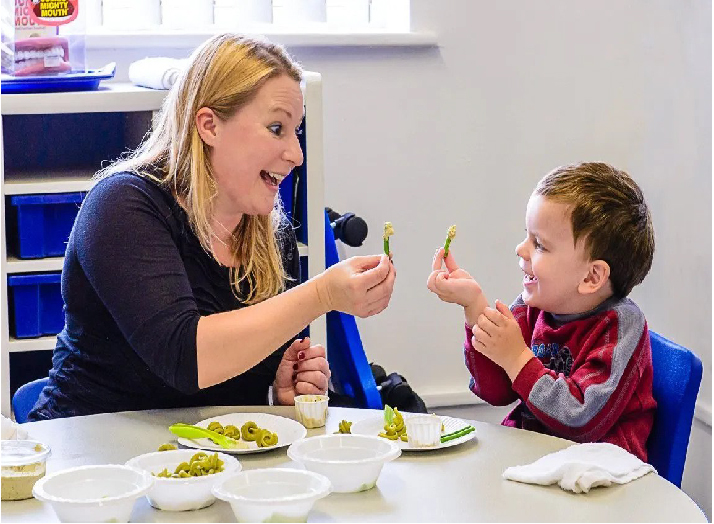The model was devised so that parents could apply its principles in the home.
Dr. Karen Zelan
In her book review of Dr. Greenspan’s book Engaging Autism: Using the Floortime Approach to Help Children Relate, Communicate, and Think, Dr. Karen Zelan says the following:
The authors devote several chapters explaining to parents how the Floortime model works. Much of what the authors describe represents informed, effective play psychotherapy. What’s more, the model was devised so that parents could apply its principles in the home. Parents should follow their children’s lead and learn to share their interests with the aim of expanding their psychological and behavioral repertoires. Parents and professionals can best reach the child by letting the interaction evolve gradually, with the child an active participant, sometimes leading the way, sometimes following an inventive adult who varies their joint activities. Emotional engagement is at the heart of the method whereby children come not only to value human interaction but to actually take pleasure in it.
Dr. Stanley Greenspan and his co-author Dr. Wieder fortunately do not subscribe to the notion that ASD youngsters are incapable of pretend play. In building up a child’s use of words, concepts, and symbols, they stress the importance of pretend play in engaging the emotions. They also recommend “interactive drama” as a therapeutic tool. Citing the multi-modal appeal of attempts to help children think abstractly, the authors assert, “Teach not just with words but also with images, actions, and drama” (p. 124). A three-year-old boy with whom I worked experienced an emotional breakthrough as he dismissed his “bad boys” drama, a story that never ended happily, to join his mother in enacting what police officers actually do to protect families with little kids (Zelan, 2006).
“Once children, with or without ASD, learn the fun of interacting with another human being,” enthuse Greenspan and Wieder, “it feels so glorious and natural to them that they begin seeking it out more and more” (p. 77). And it’s never too late, write the authors, to achieve an authentic emotional engagement with even an older autistic youth. I once worked with a fourteen-year-old autistic girl who learned to re-engage emotionally by hugging me, then by jumping into my arms to be carried about. A caretaker’s pleasure in renewed contact with an autistic child doubtless fosters future emotional engagement between them; I was overjoyed that the girl who had grimly avoided personal contact now could not get enough of it (Zelan, 2003).

